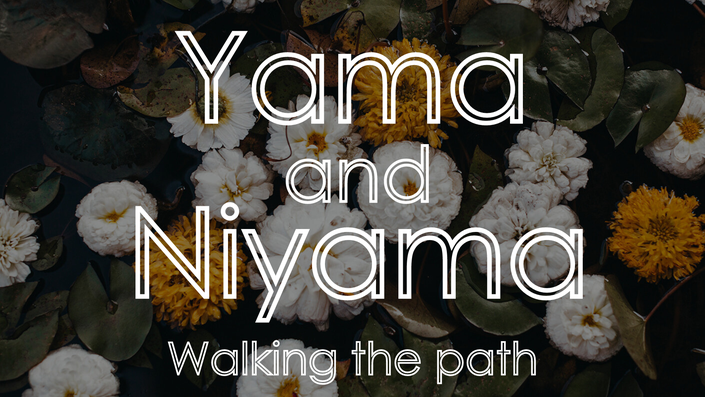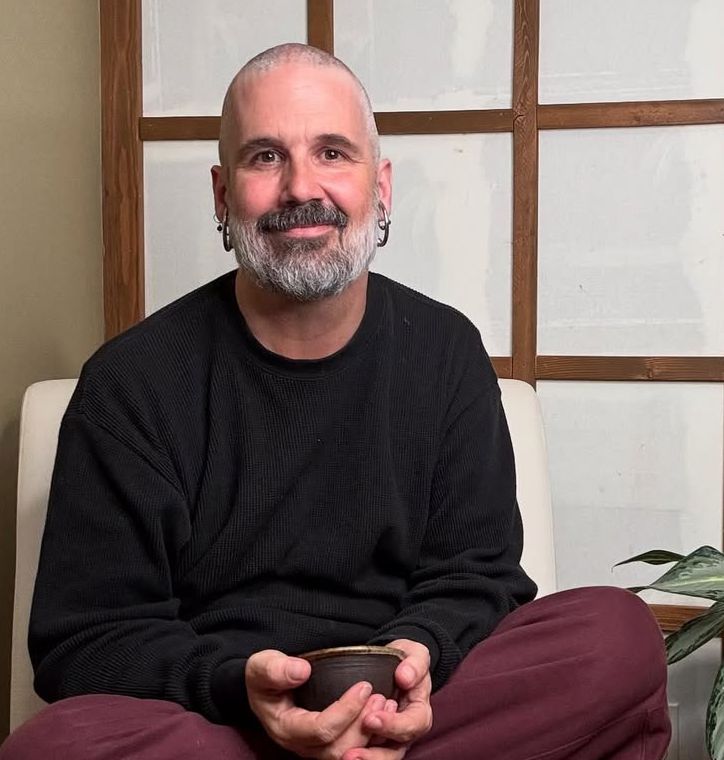
Online Course with Harshada Wagner
Why Yama and Niyama?
Once the great Siddha Guru Neem Karol Baba (Mahārāji) was speaking to Bābā Rām Dāss. He said "No one does yoga anymore." He was speaking of hatha yoga - also known as ashtanga yoga. He said that from his point of view, the last 6 limbs can only be done when the practitioner was really practicing the first two; Yama and Niyama; and, from Mahāraji's point of view no one does.
The Yama and Niyama are ethical precepts and guiding behavioral principles. They are found in many classical texts. In the west, ten of them are most commonly known from the Patanjali Yoga Sutrā. Patanjali outlines 8 limbs of yoga including āsana (commonly misinterpreted as physical postures), prānāyāma (commonly misinterpreted as breathing exercises), prathyahāra (turning inward of attention), dhārana (meditation technique), dhyāna (meditation), and samādhi (meditative absorption). But before these six limbs, focused on inner practice are given two preliminary aims are there: Yama and Niyama. There are five of each, and they serve to guide aspirants into the right way of being, the right attitude to cultivate, and the best inner energetic environment to create to support their inner yoga. And they are deep.
The Yama are:
- Ahimsā - non-malice
- Satya - authenticity
- Asteya - non stealing
- Brahmacharya - control of sexual energy
- Aparigraha - non hoarding
The Niyama are:
- Shaucha - purity
- Santosha - contentment
- Tapas - austerity
- Svadhyāya - sacred study
- Ishvarapranidhāna - surrender to God.
As I said, other classical systems besides yoga have other great yama and niyama, but these are the basic 10. They are so rich, and so deep! Contemporary western commercial yoga has made the Yama and Niyama into sprinkles, like condiments that flavor our real practice (the physical āsana class). But if you take any one of these and actually endeavor to master them before doing practice - it’s an intense path. Classically, it was assumed that serious sādhakas were established in these as a prerequisite to other instruction. From this point of view, I must say, I agree with Maharāji.
In this course, we will be going deep into the exploration of each of the Yama and Niyama and exploring how we can apply them in our contemporary lives. I will weave in teachings from other traditions than Patanjali such as Bhakti, Non-dual Tantra, Sufism, and the Sahaja Siddha tradition.
Why? Because I agree with Maharāji's assessment. And he was speaking about Indian sādhakas in the 1960s! I find that there is a deep lack of this kind of inner cultivation in contemporary yoga scenes and even amongst serious practitioners. These 10 principles will provide a lens for us over 10 weeks to deepen our experience not just of practice, but of life itself.
It's for anyone who deeply cares about yoga, and by yoga I mean the actual classical meaning of yoga. My definition of yoga is this:
Yoga is the process of discovering, owning, and expressing our innate, sacred, human magnificence.
Yoga has come to mean so much less than this. It has become, for most people who use the word, merely an exercise method. This course is for true students of yoga, yoga teachers, yoga-related business owners, and anyone who wants to use the potent alchemical medicine of applied yoga philosophy to change their experience of being alive.
How Does the Course Work:
We will take 10 weeks to go through the five Yama and five Niyama. Each week features a masterclass video, recorded live when the group course took place. Each class will features an in-depth discussion on the Yama or Niyama of the week, guided practice, and questions and answers. In addition to the weekly class, notes, links, guided meditations and other resources will also be posted here.
The video links and all other resources will remain on the platform indefinitely for your reference and further study.
How Much Does It Cost?
The course is very affordable. Just $350 for the whole 10 weeks of the course.
*We recently removed PayPal as an option for payment through this page. But if you would like to use PayPal or Venmo to pay, you can. Just email thebest@davidhwagner.com and we will let you know how to do it.
Your Instructor

Harshada Wagner is a master meditation instructor, author, artist, dad, and wisdom teacher with more than 29 years of teaching experience. Classically trained in the wisdom traditions of Yoga, Bhakti, Vedanta, and Tantra, his teachings come from his decades of working with people helping them learn to live more fulfilling, soul-centered, purpose driven lives. The Sanskrit name Harshada was given to him by Gurumayi Chidvilasananda in 1996, meaning "the bringer of joy, laughter, and delight".
Along with being a meditation teacher and teacher-trainer, Harshada is a teacher of "applied yoga philosophy". He offers teachings and practices from the Mahayoga tradition, but only ones that help people to get free, transform their vision of life, and serve their world in a better way.
He's known as a down-to-earth, lighthearted teacher who is able to help people get to the "deep stuff" fast. He offers a balance of grounded, approachable style of teaching with the most profound ancient wisdom and classical mystic practices. He is a dynamic speaker and storyteller and is considered one of the best meditation teachers of his generation.
He is the author of the men's book Backbone (Penguin 2015), and On the Field of Dharma (about the Bhagavad Gita), and is currently working on a modern translation of and commentary on the 10 century Tantric text known as the Shiva Sutra.
He is the proud father of two and lives with his family in Ojai, California when he is not traveling to offer retreats and seminars.